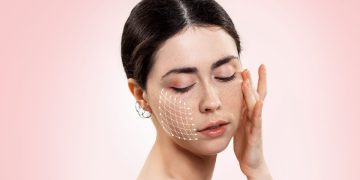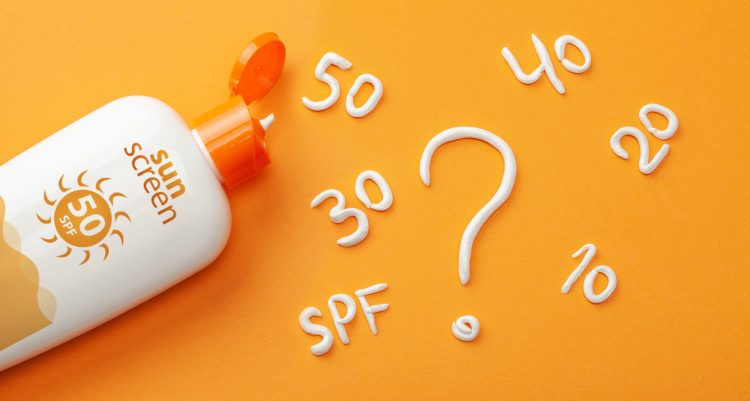As the climate shifts, the way we approach skincare is undergoing a profound transformation. Rising temperatures, increased UV radiation, heightened pollution levels, and unpredictable weather patterns are forcing the beauty industry—and consumers—to rethink traditional skincare routines. Skincare is no longer just about aesthetics; it has become a critical defense mechanism against environmental stressors. But how exactly is climate change reshaping our skincare needs, and what innovations are emerging to meet these challenges?
This article explores the intersection of climate science and skincare, examining pollution defense, SPF evolution, adaptive moisturizers, and the broader implications for product formulation and daily routines.
1. The Climate-Skin Connection: Understanding Environmental Stressors
Climate change introduces new stress factors for the skin, creating a dynamic and sometimes hostile environment. Key stressors include:
- UV Radiation Increase: Thinning ozone layers and longer daylight hours intensify UV exposure, accelerating photoaging and increasing the risk of skin cancers.
- Air Pollution: Smog, particulate matter, and industrial pollutants induce oxidative stress, leading to inflammation, premature aging, and compromised skin barriers.
- Temperature Extremes: Rising global temperatures and heatwaves can dehydrate skin, increase sebum production, and exacerbate sensitivity.
- Unpredictable Weather: Frequent storms, humidity fluctuations, and drought conditions disrupt the skin’s natural moisture balance and microbiome.
These factors highlight why traditional skincare formulations may no longer suffice. Modern skincare must evolve to protect, adapt, and repair in an increasingly hostile environment.

2. Pollution Defense: Protecting Skin from Invisible Enemies
Airborne pollutants are among the most insidious climate-related stressors. Research shows that chronic exposure to particulate matter (PM2.5), heavy metals, and volatile organic compounds accelerates skin aging and triggers inflammatory responses.
Key Innovations
- Antioxidant-Infused Formulas: Ingredients like vitamin C, niacinamide, and green tea polyphenols neutralize free radicals generated by pollution.
- Barrier-Strengthening Compounds: Ceramides, fatty acids, and hyaluronic acid help reinforce the skin’s natural defenses.
- Detoxifying Masks and Cleansers: Activated charcoal, clay, and enzyme-based treatments remove particulate build-up and restore clarity.
Practical Application
Daily pollution defense has become essential in urban environments, especially in cities experiencing worsening air quality due to climate-related industrial emissions and wildfires.
3. SPF Evolution: Beyond Sun Protection
Sun protection has long been a staple of skincare, but climate change is pushing SPF innovation to new frontiers. Increased UV intensity, combined with higher temperatures, necessitates more adaptive and comprehensive protection strategies.
Key Trends
- Broad-Spectrum SPF: Modern formulations now guard against both UVA, UVB, and increasingly, visible light and infrared radiation.
- Antioxidant Integration: Combining SPF with antioxidants addresses both direct UV damage and secondary oxidative stress.
- Environmental-Responsive Sunscreens: Next-generation SPF products adjust protection levels based on UV index, air pollution, and skin hydration.
Consumer Implications
Sunscreens are becoming multifunctional, integrating hydration, pollution defense, and anti-aging benefits to meet the demands of changing environments.
4. Adaptive Moisturizers: Responding to Extreme Conditions
Moisturization strategies are also evolving in response to climate extremes. Heat, cold, humidity fluctuations, and wind can all compromise the skin’s natural barrier function.
Technological Innovations
- Hydro-Responsive Formulations: Ingredients that increase water retention during dry spells and provide light hydration in humid climates.
- Climate-Specific Oils: Lightweight botanical oils for hot, humid conditions and richer occlusive compounds for cold, dry climates.
- Barrier-Adaptive Peptides: Proteins that strengthen epidermal resilience and improve skin repair mechanisms.
Real-World Application
Adaptive moisturizers offer a proactive approach, allowing users to maintain healthy skin despite fluctuating environmental stressors. Personalization and seasonal adjustments are increasingly recommended by dermatologists.
5. Integrating Climate Awareness into Daily Skincare
To address the new challenges posed by climate change, consumers must adopt a more strategic approach to skincare:
- Monitor Environmental Conditions: Utilize apps and local UV/pollution indices to adjust skincare routines.
- Layer Protection: Combine antioxidant serums, barrier creams, and SPF for comprehensive defense.
- Personalize Regimens: Adjust formulations seasonally or in response to extreme weather events.
- Focus on Recovery: Include overnight restorative treatments to counteract daily environmental stress.
Educating consumers on the interplay between climate and skin health is critical for maintaining both efficacy and safety.
6. Industry Innovations: Products Designed for a Changing Climate
The beauty industry is responding with products tailored to climate-conscious skincare:
- Smart Formulations: AI-driven skincare recommendations adapt products to local environmental conditions.
- Sustainable Packaging: Climate-friendly packaging reduces the ecological footprint of skincare products.
- High-Performance Ingredients: Research into algae extracts, bioengineered peptides, and UV-neutralizing compounds is accelerating.
Brands that anticipate climate-driven needs are poised to lead the market, offering solutions that combine efficacy, sustainability, and resilience.
7. Broader Implications: Skincare as a Climate-Responsive Lifestyle
Skincare is evolving from a purely cosmetic practice into a climate-responsive lifestyle choice. Daily routines now consider not just individual aesthetics, but environmental factors and long-term skin resilience. Consumers are increasingly aware that beauty and health are inseparable in a world shaped by climate uncertainty.
Societal Trends
- Rise of climate-aware skincare influencers
- Educational campaigns linking environmental protection and personal care
- Greater consumer demand for multifunctional, adaptive products
Conclusion: Is Climate-Responsive Skincare the New Standard?
Climate change is fundamentally altering the landscape of skincare. Pollution, intensified UV exposure, and extreme weather patterns are driving the evolution of SPF, moisturizers, and protective formulations. Modern skincare now requires an adaptive, science-based approach that shields skin from environmental aggressors while promoting long-term health.
As climate pressures increase, individuals and industries must prioritize resilience, innovation, and personalization. In essence, climate-responsive skincare is no longer optional—it’s an essential strategy for maintaining healthy, radiant skin in a changing world.












































